Of the lotus is a rooted aquatic plant that grows mainly in tropical and muddy regions. On the one hand, it has a religious meaning in Buddhism, but is also known as a food and is indicated for the treatment of various diseases.
What you should know about the lotus

In the Lotus flower, also known under the name lotus, is a herbaceous water plant that has rooted underground. The name lotus means "the treasured plant" in Greek, the spelling "lotus" is derived from the Latin.
It belongs to the lotus family and the lotus flower genus. The leaves belong to the three basic organs of the plant, as well as the stem axis and the root. The leaves and stipules of the lotus flower are shield-shaped. The large flowers of the plant, the so-called unbranched short shoots, are bisexual and have many free carpels. The short sprouts are pollinated by beetles. The lotus flower develops a height of one to two meters and the leaves are around 20 - 40 cm tall.
The occurrence of the lotus is divided into two types. On the one hand the so-called Nelumbo lutea, which can be found in tropical America. There is also the Nelumbo nucifera (Indian lotus). This type of lotus flower grows widespread in subtropical Asia and occasionally in the tropical north of Australia. The lotus has been a cultural plant of the Orient for over 3,000 years. It is said that the holy Buddha was born on a lotus flower. In addition to the cultural history, the plant is also of great importance in nutrition, health and any spiritual aspect.
Scientists have shown that the seeds of the lotus family can begin to germinate for up to 1,300 years. The plant blooms in white or a delicate pink, the leaves are a strong green. The lotus flower has the special property that water and dirt roll off the plant completely. This phenomenon is also known as the "lotus effect". Another special feature is that the lotus, as one of the few plants, is able to maintain the temperature of the petals while the environment cools down and to some extent also regulates it.
Importance to health
The lotus has had a relatively high status in medicine for some time. The lotus root in particular is used in a variety of ways in the medical and health sectors thanks to its nutrients and other constituents.
Compared to other plants of this type, the lotus flower covers a wide range of different diseases or symptoms. The root is successfully used to strengthen the immune system, low blood pressure or when the cholesterol level is too high. Furthermore, the lotus root has a positive effect on depressive moods or general mood swings. The lotus is also often taken to regulate the digestive system. According to studies, regular consumption of the lotus root should have a prophylactic effect against the formation of various cancer cells and have a positive effect on the cardiovascular system and thus the blood flow in the entire body.
Ingredients & nutritional values
The lotus plant is made up of many different nutrients and vitamins. It is a carrier of many minerals, such as calcium, sodium, phosphorus, potassium, iron, magnesium, but also zinc and copper. The lotus contains, among other things, thiamine (vitamin B1), riboflavin (vitamin B2), niacin (vitamin B3), pantothenic acid (vitamin B4), pyridoxine (vitamin B6), but also folic acid or ascorbic acid (vitamin C). However, the main components are made up as follows:
Lotus root:
- Calories: 74 kcal
- Fat: 0.1 g
- Carbohydrates: 17.23 g
- Proteins: 2.6 g
- Dietary fiber: 4.9 g
- Water: 79.1 g
Lotus seeds:
- Calories: 89 kcal
- Fat: 0.5 g
- Carbohydrates: 17.3 g
- Proteins: 4.1 g
- Dietary fiber: 0.0g
Intolerances & allergies
Lotos can be safely consumed or taken as a homeopathic remedy. Side effects or allergic reactions are not yet known. However, it should always be remembered that taking lotus will subside the symptoms of life-threatening illnesses, such as a heart attack or stroke. Thus, the extent of a possible illness cannot be recognized in time. Diffuse pain and symptoms should therefore always be clarified by a doctor.
Shopping & kitchen tips
In their entirety, the root and the stems of the lotus blossom are edible and edible. The stems of the plant protrude about a meter out of the muddy earth and are therefore very easy to harvest. If you want to eat the plant stalks, the stalks must first be opened and cleaned thoroughly, as insects and other beetles can be found in the cavity.
In principle, all components of the plant can be eaten, petals, leaves, but also the seeds. However, these are individually not edible, but not harmful. Often these are combined with other dishes. The large leaves are used, for example, to wrap rice, small leaves can be used for a salad and dried leaves can be used to brew a tea drink.
The seeds of the lotus blossom can be used for cooking soups, baking or roasted as coffee. In Asia, candied seeds are often prepared as a snack. The leaves of the lotus blossom are mostly only used for decorative purposes, but they can also be brewed into a tea. The most popular of the whole plant, however, are the leaf stalks. They are served as a vegetable and therefore as a side dish. Traditionally, the leaf stalks were used as a wick for oil lamps.
Preparation tips
When preparing the lotus root, the peel should be removed before consumption and processing. This is best done with a peeler, like the one used for a potato, for example.
Once the peel has been removed, the root should be washed off very well. Since the lotus root has cavities on the inside, it should be opened and cleaned from the inside. Often insects use the cavity to live. Then it can be cut into slices or cubes and distorted. The lotus root is eaten raw or cooked.
When preparing the lotus seeds, the lotus nut must first be opened and the germ broken out. Then the nuts should be dried and opened. The seeds are in the cardamom capsule. The seeds can be roasted or made into a spread.
When preparing a tea drink, the leaves or petals should be washed off properly before use. Then put the leaves in a cup and pour boiling water over them. If you like, you can also add a little pinch of salt. The tea should be drunk as hot as possible, as it has a particularly good effect on a cold or bronchial infections.


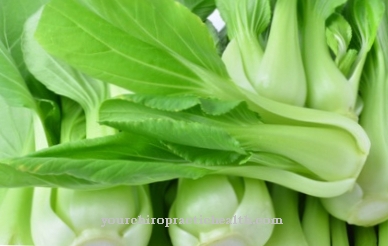
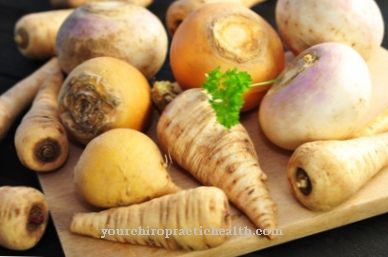
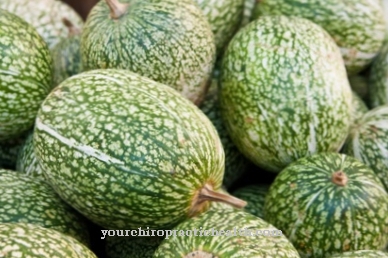
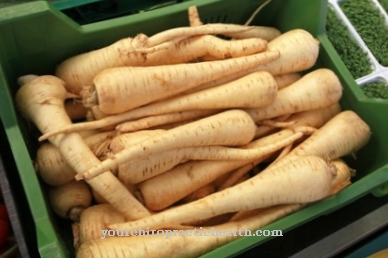
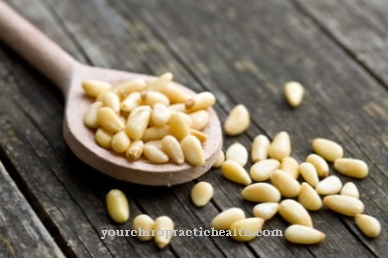


















.jpg)


